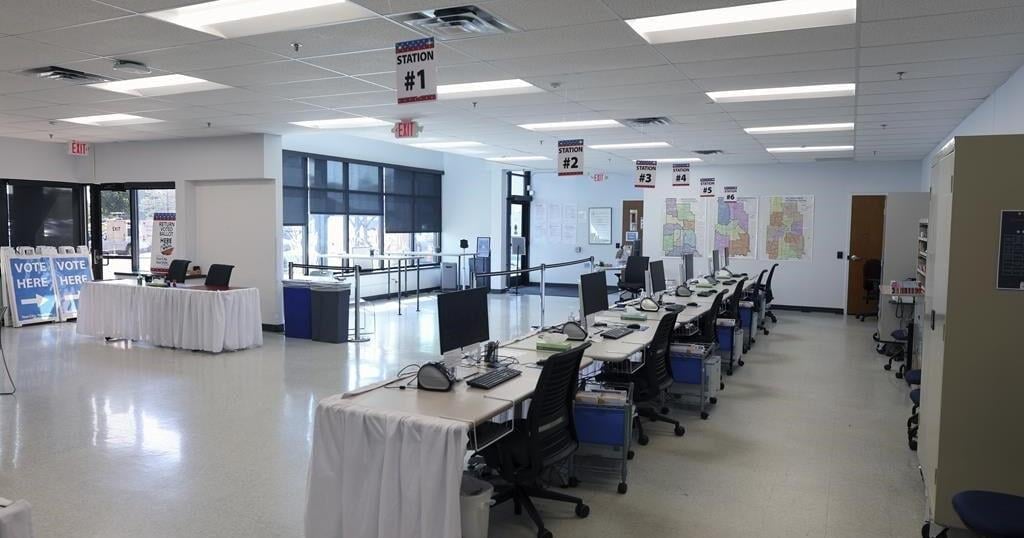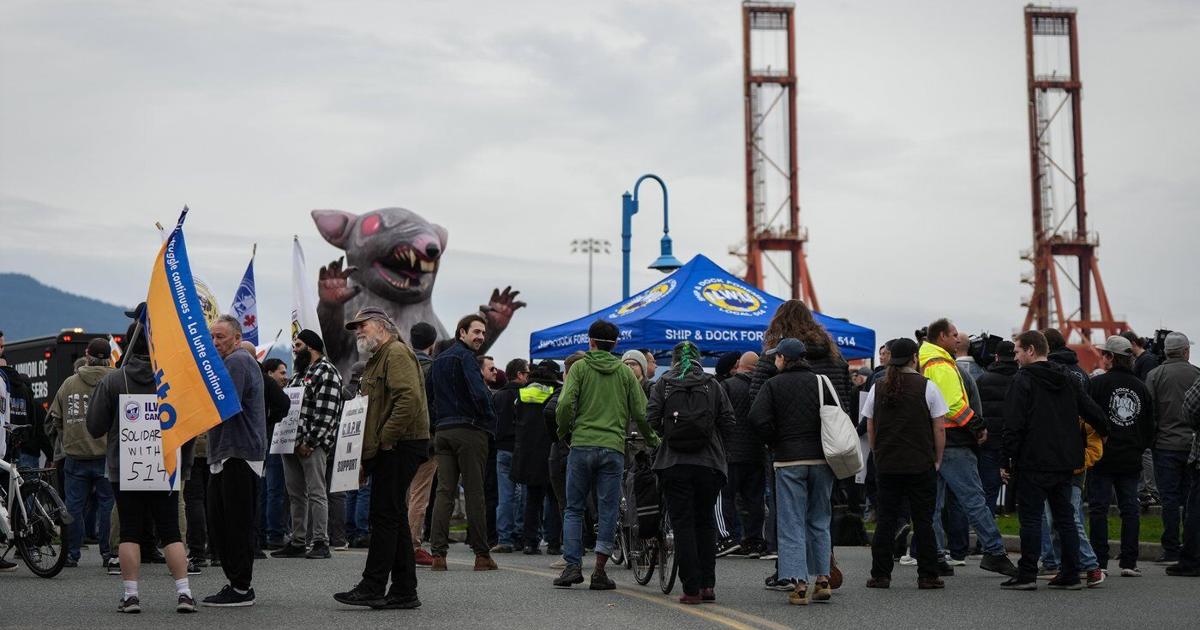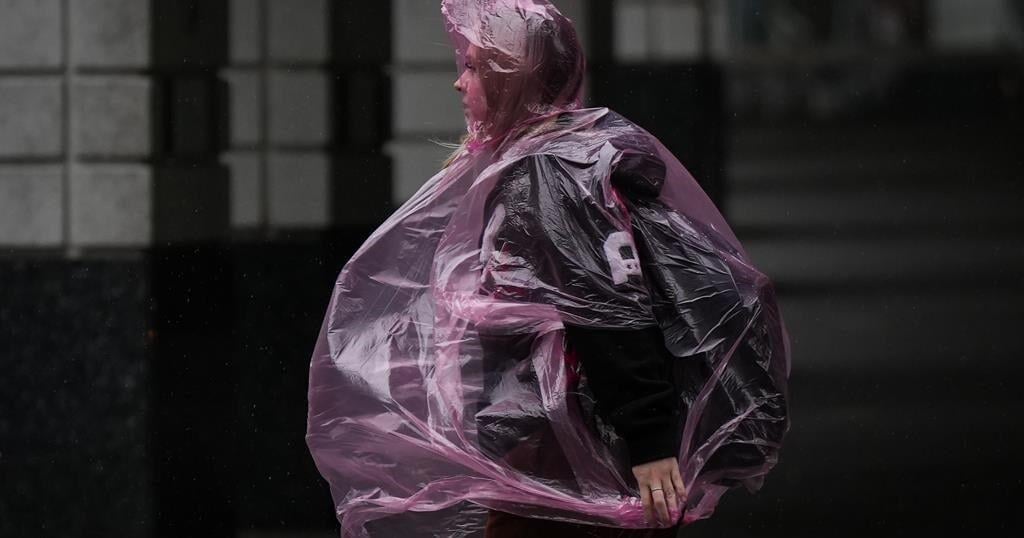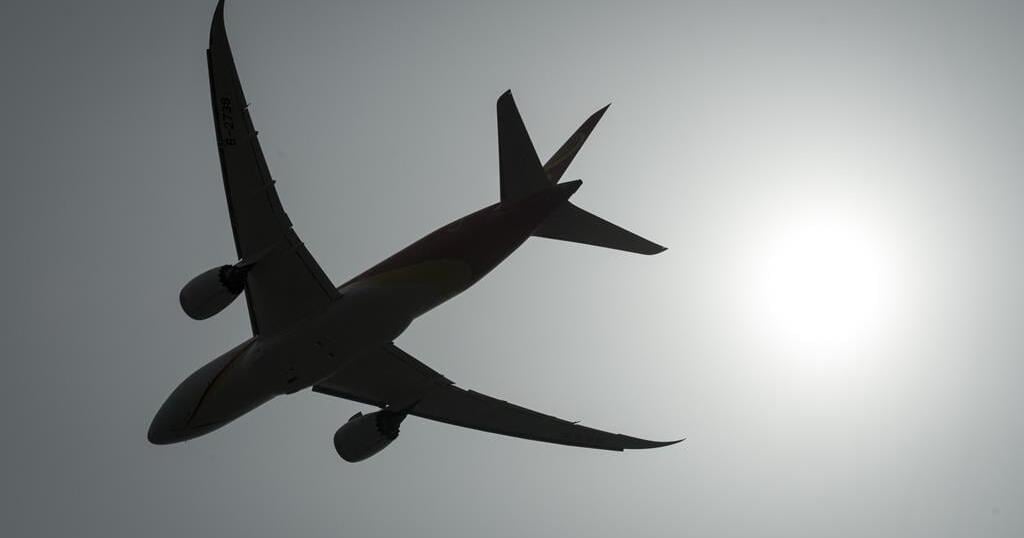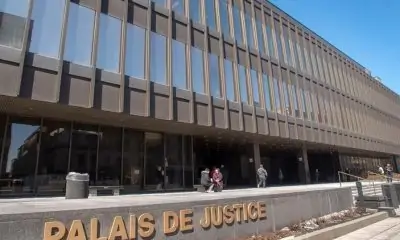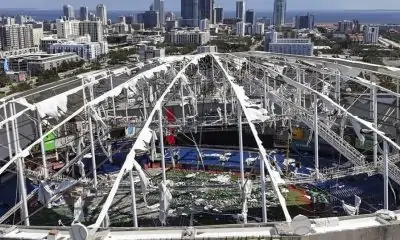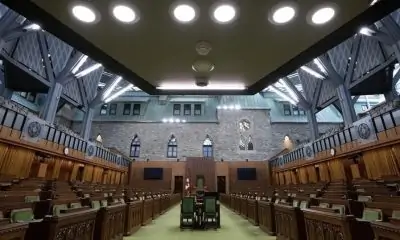MINNEAPOLIS (AP) — In-person voting for this year’s presidential election began Friday, a milestone that kicked off a six-week sprint to Election Day after a summer of political turmoil.
Voters lined up to cast their ballots in Minnesota, South Dakota and Virginia, the states with the first early in-person voting opportunities. About a dozen more states will follow by mid-October.
At a polling site in Minneapolis, Jason Miller arrived well before the polls opened at 8 a.m. and was first in line. He was among roughly 75 people who cast ballots in the first hour at the city’s early voting center.
“Why not try to be first? That’s kind of fun, right?” said the 37-year-old house painter.
He said he voted “against crazy,” but didn’t want to name his choice for president.
“I don’t think I have to. I think that’s pretty obvious. I think that’s very, very clear,” he said.
The beginning of in-person balloting follows a tumultuous summer in American politics that included President Joe Biden dropping out of the race and being replaced by Vice President Kamala Harris as the Democratic nominee, and an assassination attempt against Republican nominee Donald Trump followed by another apparent attempt on his life just nine weeks later.
Across the country, local election directors are beefing up their security to keep their workers and polling places safe while also ensuring that ballots and voting procedures won’t be tampered with. Officials and ordinary poll workers have been targets of harassment and even death threats since the 2020 presidential election.
Federal authorities are investigating the origin of suspicious packages that have been sent to or received by elections officials in more than 15 states in recent days, including Virginia.
“If I could wave a magic wand in this room right now, I would wish for two things: Between now and November 5th, I want to see high turnout and low drama,” Minnesota Secretary of State Steve Simon said during a news conference Thursday that previewed his state’s efforts around the election season. Simon also serves as president of the National Association of Secretaries of State.
Some voters suggested that the potential for trouble or chaos on Election Day was one reason not to wait.
Chris Burda, 74, said she is encouraging others to get their ballots in early “to avoid potential disruption on Election Day or in-person voting by a certain party who seems to be interested in poll watching to the point of intimidation.” She cast her ballot for Harris at a Minneapolis voting center, saying the vice president was “standing up for democracy and the freedom to choose.”
As the start of early voting approached, Trump’s rhetoric turned more ominous with a pledge to prosecute anyone who “cheats” in the election in the same way he falsely claimed they did in 2020, when he lied about widespread fraud and attacked officials who stood by their accurate vote tallies.
Trump has previously sought to sow doubts about mail voting and encouraged voters to cast ballots in person on Election Day. But this year, Trump and the Republican National Committee, which he now controls, have begun to embrace early and mail voting as a way to lock in GOP votes before Election Day, just as Democrats have done for years.
Eugene Otteson, 71, a Vietnam War veteran and former mill worker, cast his early ballot for the former president in Anoka, Minnesota. He said he believes Trump will keep the country from intervening in foreign conflicts and will manage the economy like a business executive.
“Not that I like him, but he’s a business person, and I like someone who can run a business,” Otteson said. “With Kamala, you still don’t know what she stands for … I hear her going around say ‘joy, joy.’ Well, I can say joy to the world, but that don’t mean it’s going to stop the wars going on.”
In Virginia, early in-person voting has long been popular in many parts of the state.
Fairfax County Elections Director Eric Spicer said roughly a third of local voters came to the polls on Election Day during the 2020 presidential election, while the rest voted by mail or early and in-person. Mary Lynn Pinkerman, the elections director for the city of Chesapeake, expects early voting to help ease the crowds on Nov. 5 but also cautioned that with heavy interest in this year’s presidential race, “voters could still encounter wait times” on Election Day.
Among Virginians taking advantage of early voting Friday was Rocklyn Faher, a retired U.S. Navy aviation electrician who served in the first Gulf War. He became emotional when talking about casting his ballot in Norfolk for Harris. Fighting back tears, he spoke about preserving the Constitution and the future for his grandchildren.
“I’m obviously very emotionally invested in this election,” said Faher, 70. “It is the most important election of the last 100 years.”
Faher said he believes in protecting reproductive rights and likes Harris’ plan to provide $25,000 for first-time homebuyers, while criticizing Trump’s plan to impose tariffs on products from overseas.
He also said that Harris’ overall proposals are “better than herding 10 million naturalized and unnatural immigrants, documented or undocumented, into railroad cars and shipping them across the border into Mexico. That’s insane.”
Immigration, and in particular the surge at the country’s southern border over the past few years, also is animating those casting a ballot for Trump, who has promised mass deportations if he wins the presidency again.
Israel Chavez, 37, came to America from Peru as a 10-year-old with his father and sister. He voted for Trump because he believes the economy was stronger under the former president and he supports a harder line on immigration.
“I know how it is when you have an open border and let anyone in,” he said after casting his ballot at a voting center in Anoka, Minnesota. “My dad brought us into the country legally. We had visas. He just did it right.”
In Yankton, South Dakota, the county elections office saw a steady stream of people voting early immediately after it opened at 9 a.m., said Kasi Foss, the county’s assistant auditor. That’s unusual for the first day of early voting.
She said that while the office didn’t have a line for voting, the office consistently had two or three people wanting to vote at all times.
South Dakota voters are deciding the fate of several ballot initiatives on hot-button issues, including a proposed amendment to the state constitution to protect abortion rights and a measure that would legalize the recreational use of marijuana. But Foss said she believes the presidential race is driving turnout.
“Normally, on the first day, we’ll have a couple of stragglers,” she said.
Some voters might opt for early in-person balloting instead of using mail ballots to ensure their votes get counted, given the ongoing struggles of the U.S. Postal Service.
State and local election officials from across the country last week warned that problems with mail deliveries threaten to disenfranchise voters, and they told the head of the system that it hasn’t fixed persistent deficiencies despite their repeated attempts at outreach.
Postmaster General Louis DeJoy responded in a letter released Monday that he’ll work with state election officials to address their concerns, but reiterated that the Postal Service will be ready.
Simon, the Minnesota secretary of state, urged voters to make their voting plans now.
“My hope and expectation is that the USPS will do the things that we have recommended, and do them quickly over the next 47 days because the stakes really are high for individual voters,” Simon said.
___
Associated Press writers Olivia Diaz in Fairfax, Virginia, Jack Dura in Bismarck, North Dakota, Ben Finley in Chesapeake, Virginia, John Hanna in Topeka, Kansas, Michael Goldberg in Anoka, Minnesota, and Mark Vancleave in Minneapolis contributed to this report.

